Archives
- 2025-10
- 2025-09
- 2025-03
- 2025-02
- 2025-01
- 2024-12
- 2024-11
- 2024-10
- 2024-09
- 2024-08
- 2024-07
- 2024-06
- 2024-05
- 2024-04
- 2024-03
- 2024-02
- 2024-01
- 2023-12
- 2023-11
- 2023-10
- 2023-09
- 2023-08
- 2023-07
- 2023-06
- 2023-05
- 2023-04
- 2023-03
- 2023-02
- 2023-01
- 2022-12
- 2022-11
- 2022-10
- 2022-09
- 2022-08
- 2022-07
- 2022-06
- 2022-05
- 2022-04
- 2022-03
- 2022-02
- 2022-01
- 2021-12
- 2021-11
- 2021-10
- 2021-09
- 2021-08
- 2021-07
- 2021-06
- 2021-05
- 2021-04
- 2021-03
- 2021-02
- 2021-01
- 2020-12
- 2020-11
- 2020-10
- 2020-09
- 2020-08
- 2020-07
- 2020-06
- 2020-05
- 2020-04
- 2020-03
- 2020-02
- 2020-01
- 2019-12
- 2019-11
- 2019-10
- 2019-09
- 2019-08
- 2018-07
-
Previous studies found that depression primarily results
2020-09-27
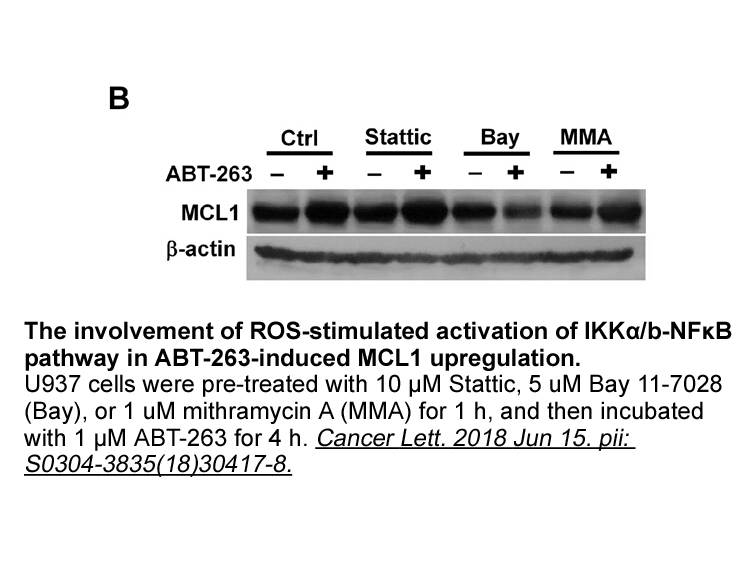
Previous studies found that depression primarily results from impaired monoaminergic neurotransmission systems [1], [2]. The glutamatergic and GABAergic systems as well as several neuropeptide systems have also been the focus of pathophysiological studies on depression [1], [2]. Inflammatory cytokin
-
Supported by the Austrian Science Fund FWF grant
2020-09-27
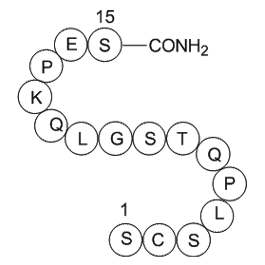
Supported by the Austrian Science Fund FWF (grant P22521-B18 to A.H.) and the Austrian National Bank (grant 14263 to A.H.). K.J. was funded by the PhD Program DK-MOLIN (FWF-W1241). Acknowledgements Introduction Acute lung injury (ALI) and acute respiratory distress syndrome (ARDS), a more sev
-
Recently it was reported that
2020-09-27
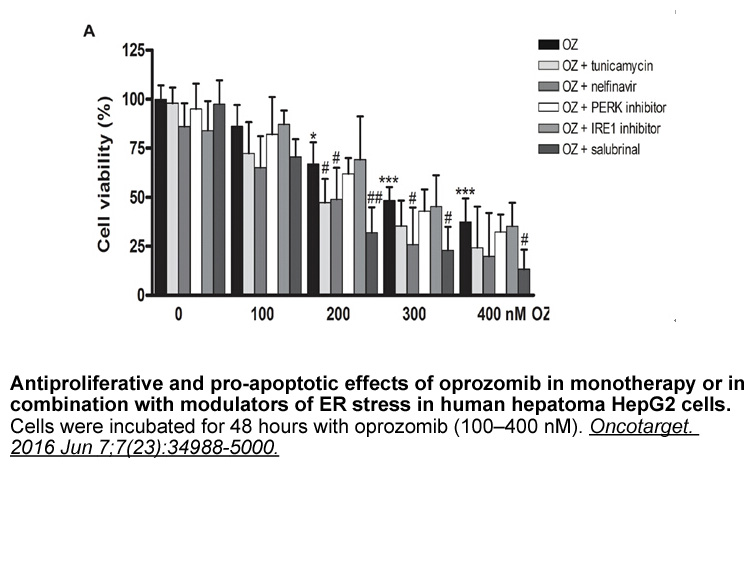
Recently, it was reported that Crm1 is linked to spindle pole body (SPB) by Spc72 in ask1 inhibitor yeast [9]. Spc72 and Spc110 are two specific receptors of γ-tubulin complex (Tub4), which target Tub4 to SPB and mediate the nucleation of microtubules from SPB [20]. It was found that disrupting the
-
Finally unilateral microinjection of CP Astressin B CP CRF
2020-09-27
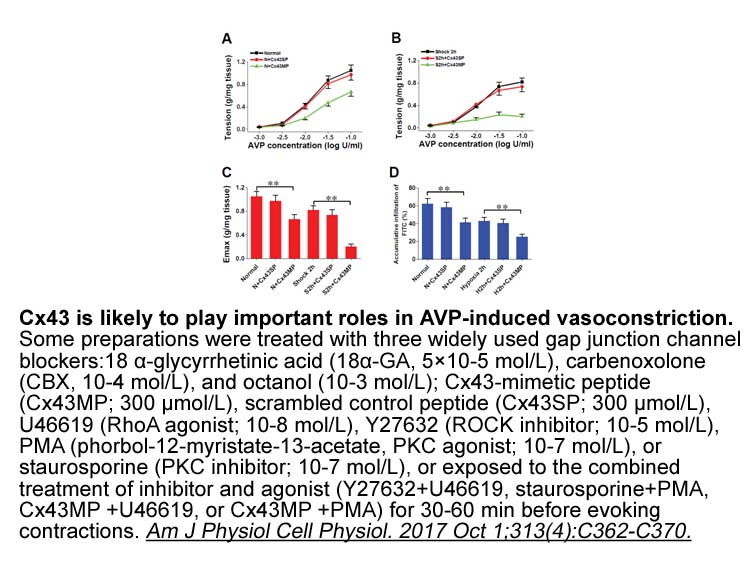
Finally, unilateral microinjection of CP-376395, Astressin 2B, CP-376395 + CRF or ASTR 2B + CRF into the BLA (Fig. 3A) or CeA (Fig. 3B) did not significantly alter spontaneous motor activity in the open field test (F4,24 = 0.148, P > 0.05; F4,29 = 0.290, P > 0.05 in the BLA and CeA, respectively, AN
-
Another important mediator in fear learning is the neuropept
2020-09-27

Another important mediator in fear learning is the neuropeptide corticotropin-releasing factor (CRF). For example, local repeated administration of CRF into the basolateral amygdala potentiates the acquisition of cue-conditioned fear (Bijlsma et al., 2011) and CRF1 receptor antagonists effectively b
-
Other studies have investigated the role of HDAC inhibitors
2020-09-25
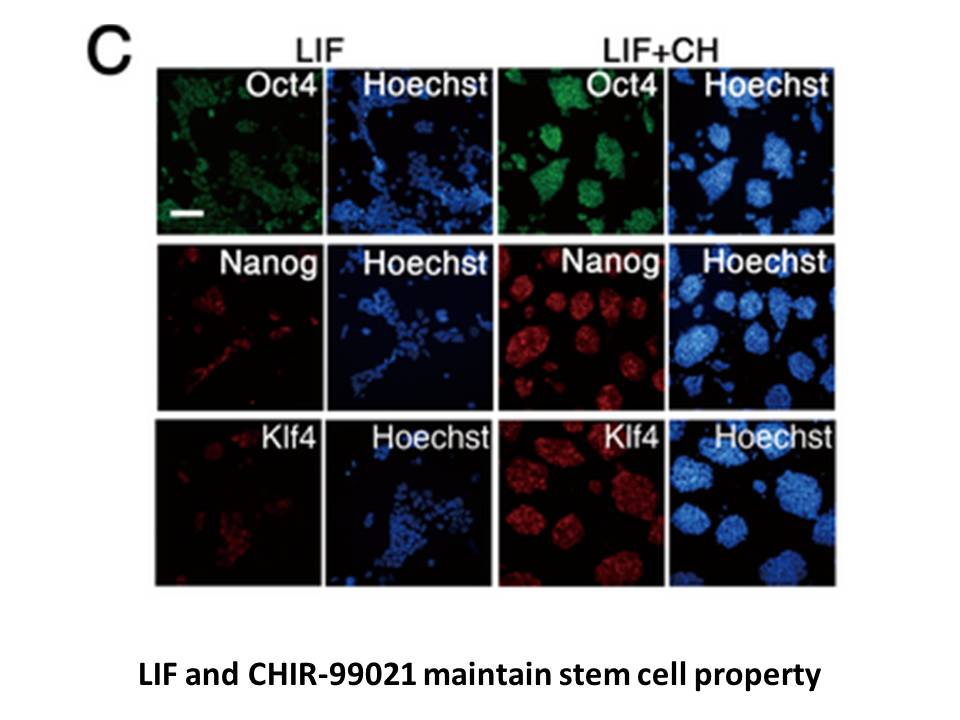
Other studies have investigated the role of HDAC inhibitors in particular signaling pathways mediated by EWS–FLI1 (Matsumoto et al., 2001). A recent investigation, showed a physical association of EWS–FLI1 and HDAC1 that helps mediate a disruption in the p53 activation of downstream targets (Li et a
-
br EphB as a therapeutic target
2020-09-25
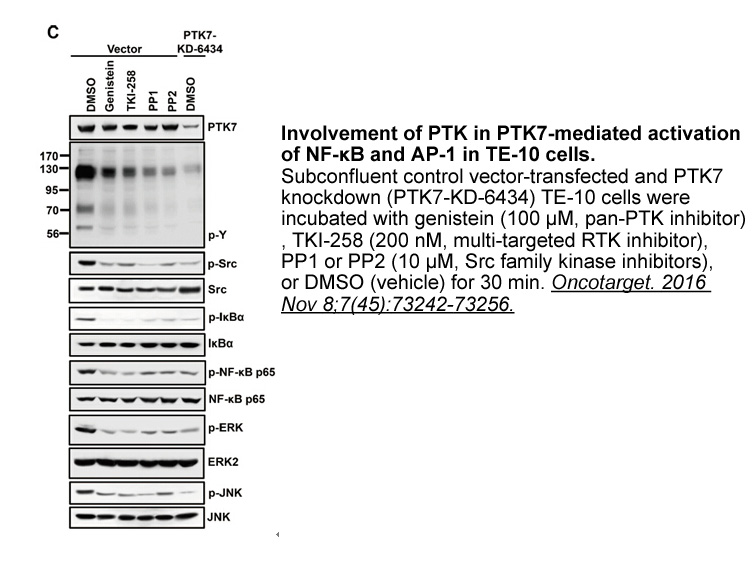
EphB4 as a therapeutic target in cancer Eph receptors and ephrins are promising new therapeutic targets in cancer. Various strategies have been employed to evaluate the interference of tumor-promoting effects or the enhancement of tumor suppressive effects. The inhibition of the Eph-ephrin system
-
A particularly important system in which Eph
2020-09-25
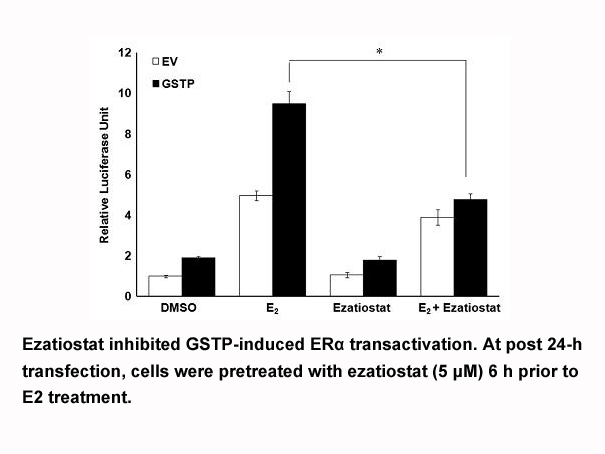
A particularly important system in which Eph-ephrin signaling has been widely studied is neural development, in which downstream signal transduction controls neural stem cell (NSC) proliferation, migration, and survival both during early development and in adulthood (19, 20, 21). Furthermore, Eph-ep
-
br Introduction Hematopoietic stem cells and leukemic
2020-09-25
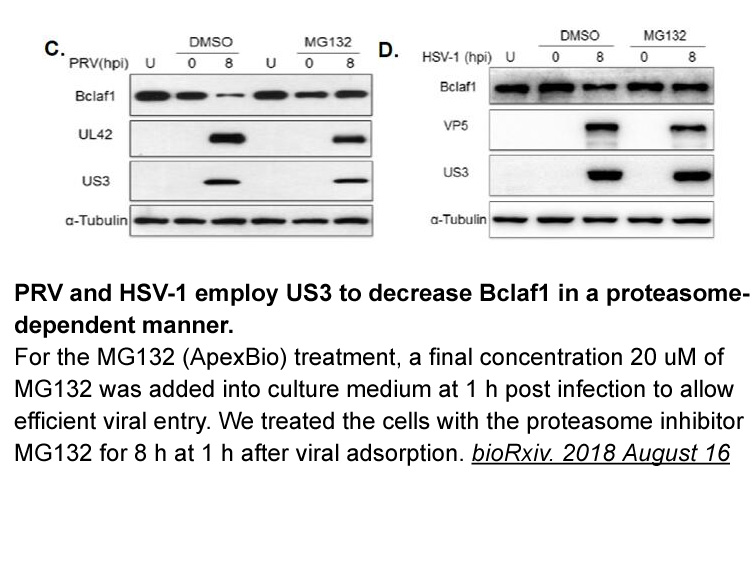
Introduction Hematopoietic stem ionomycin and leukemic stem cells (HSCs and LSCs, respectively) both have a capacity of self-renewal. Whereas HSCs give rise to all blood lineages during lifetime hematopoiesis, LSCs are responsible for the initiation and propagation of leukemia, as well as drug r
-
br Results br Discussion It
2020-09-25
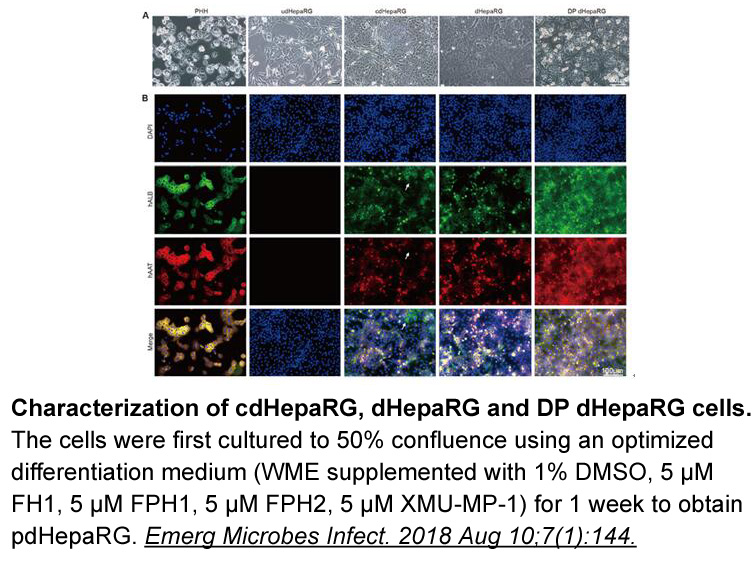
Results Discussion It has been thought that commitment to the plasma cell fate begins while Benzamil sale are still in the GC (Suan et al., 2017, Victora and Nussenzweig, 2012), but the main obstacle to test this model and, if correct, to clarify how the plasma cell-prone GC cells develop has
-
br RING type E s and their substrates
2020-09-25
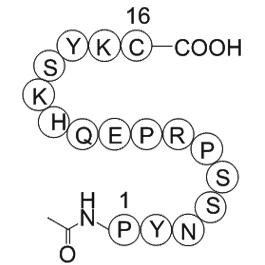
RING-type E3s and their substrates There is enormous diversity in substrate ubiquitination and its regulation, as the targets of RING-type E3s are incredibly varied. RING-type E3s are implicated as tumor suppressors, oncogenes, and mediators of endocytosis, and play critical roles in complex mult
-
SIRT has deacetylated regulation on
2020-09-25
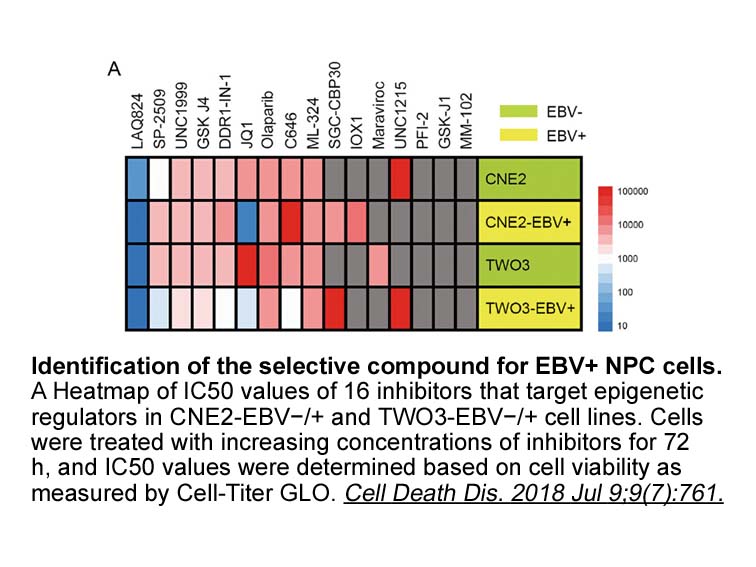
SIRT1 has deacetylated regulation on numerous nonhistone protein substrates [Atgs, Foxo1, Foxo3, PGC-1α, NF-kB, E2F1 and p53] (Conrad et al., 2016) to play a key role in protecting against cell stress. Therefore, the role of SIRT1 in fluorine-induced oxidative stress was explored. The results reveal
-
20(S)-Hydroxycholesterol synthesis In normal cells the apopt
2020-09-25
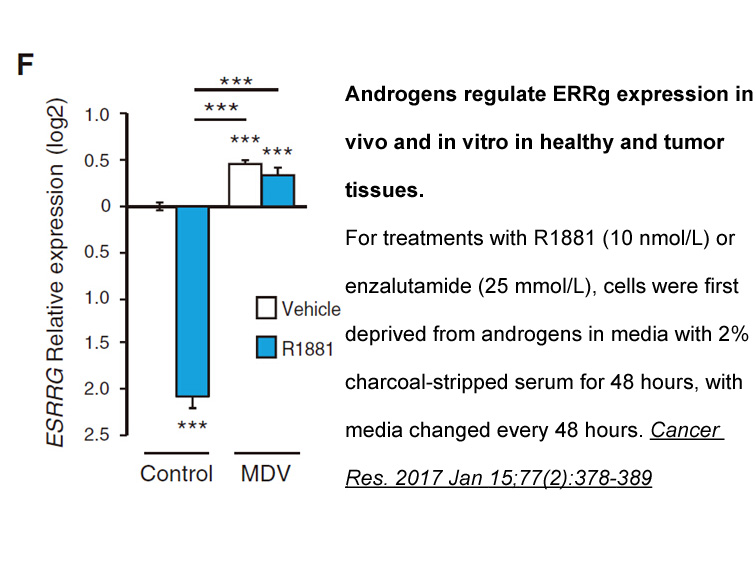
In normal cells, the apoptotic stimuli lower the expression level of antiapoptotic proteins by increasing turnover rate and preventing the constant degradation of proapoptotic proteins. Thus, the dysregulation of anti-/pro-apoptotic proteins will confer the survival of cancer 20(S)-Hydroxycholestero
-
RDH belongs to C family
2020-09-24
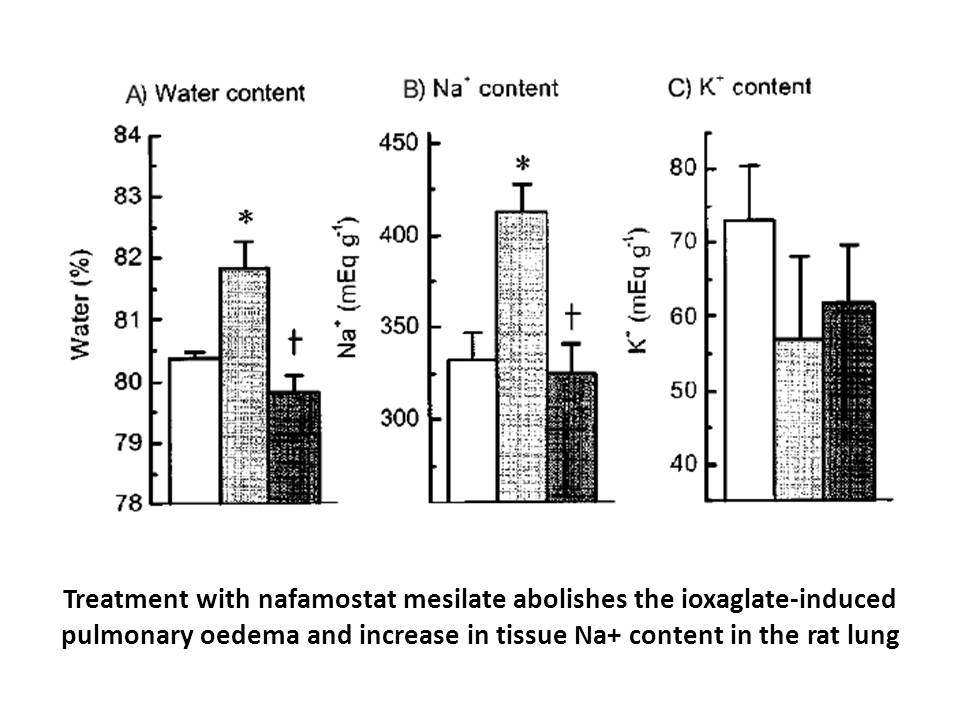
RDH10 belongs to 16C family of the short-chain dehydrogenase/reductase (SDRs) superfamily of proteins [12], [13]. Notably, in human genome adjacent to the gene encoding RDH10 on chromosome 8 are located two other genes encoding members of the SDR16C family: retinol dehydrogenase epidermal 2 (RDHE2,
-
Three DDR binding sites have been mapped on
2020-09-24

Three DDR2 binding sites have been mapped on the collagen triple helix by us for collagen type 1 and by others using the collagen toolkit for collagen type 2. All of the three reported binding sequences are conserved in the α1 chain of collagen types 1, 2 and 3. The central motif sequence GARGQAGVMG
14301 records 765/954 page Previous Next First page 上5页 761762763764765 下5页 Last page